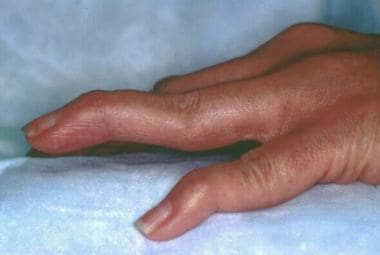
A malaria test involves the use of a blood smear. This is a basic blood test. A small sample of blood from the patient is placed on a slide. After that, a lab professional inspects the slide for parasites. Another type is the rapid diagnosis test. It looks for parasites' proteins. The rapid diagnostic test gives faster results than a blood draw, but it is still important to confirm the diagnosis.
Blood smear testing
The most reliable and easy way to diagnose malaria is with a blood smear test. It takes less than an hour. It will give doctors information about the Plasmodium species causing the infection, as well as how many parasites it contains. It can also be determined by blood smears if the patient has malaria that is more severe than other types.

Rapid diagnostic test
A rapid diagnostic malaria test, which can be used to diagnose malaria in a matter of minutes, has been developed by Kenya Medical Research Institute. This is part of a global effort to improve health. The Kenya Medical Research Institute developed the test. It is an affordable alternative to expensive laboratory testing. This state-owned institute is responsible for human health research. It was established in 1980 and has become a leading global and regional institute for health research. The institute is committed to innovation and capacity building to achieve its mission of improving human health.
PCR Test
Malaria, Covid-19 and other parasites share many symptoms. This can lead to a misdiagnosis or no diagnosis. To confirm diagnosis, a PCR test is possible.
OptiMAL-IT assay
The OptiMAL–IT malaria testing is a rapid diagnostic test that detects Plasmodium LDH. It has been tested against thick blood smears, and microscopic inspections of thick blood. This test is an excellent alternative to microscopy in malaria diagnosis.
XW-P07 assay
The XW-P07 Malaria Assay is an immunoassay which detects two proteins (P. falciparum specific HRP2 & P. vivax specific pLDH) in five milliliters total blood. The test is expected to decrease the rejection of blood donors. The assay takes place in a CLIA approved laboratory.

BinaxNOW assay
BinaxNOW detects antibodies specific to Plasmodium falciparum parasites in whole blood within just 20 minutes. It also detects aldolase, a pan-Plasmodium enzyme. This new test was approved by FDA. It is designed to rapidly diagnose malaria in humans. However, it should be noted that it does not replace microscopic examination for malaria diagnosis.
FAQ
What do you consider to be the most important public health issues of today?
Many people suffer from obesity, diabetes, heart disease, and cancer. These conditions cause more deaths yearly than AIDS, car crashes, and murders combined. Additionally, smoking, poor diet and inactivity can lead to high bloodpressure, stroke, asthma or other problems.
How can we improve our health care system?
Our health care system can be improved by ensuring everyone gets high-quality care regardless of where they live and what type of insurance they have.
To prevent children from contracting preventable diseases such as measles (MMR), it is essential that they receive all necessary vaccines.
We must continue to work towards reducing the cost of health care while ensuring that it remains accessible for all.
What does "public health" actually mean?
Public Health refers to the preservation and enhancement of the health status of the community. Public Health is about preventing illness, injury, and disability; encouraging good health practices; ensuring adequate food; and controlling communicable disease, environmental hazards, behavioral risks, and other threats.
What are the primary goals of a health care system?
A healthcare system must have three main goals: to provide affordable care, improve patient outcomes, and reduce costs.
These goals were incorporated into the framework Triple Aim. It is based upon research from the Institute of Healthcare Improvement. IHI published this in 2008.
This framework is designed to help us improve our goals by focusing on all three.
This is because they're not competing against each other. They support one another.
As an example, if access to care is improved, fewer people die from inability to pay. This helps to lower the overall cost of healthcare.
Also, improving the quality of care helps us reach our first goal - to provide affordable care for patients. It also improves the outcomes.
What are my options for immunizations in the United States?
Immunization refers to the stimulation of an immune response to vaccines. The body reacts to the vaccine by producing antibodies (immunoglobulins), which protect against infection.
Statistics
- About 14 percent of Americans have chronic kidney disease. (rasmussen.edu)
- Price Increases, Aging Push Sector To 20 Percent Of Economy". (en.wikipedia.org)
- For the most part, that's true—over 80 percent of patients are over the age of 65. (rasmussen.edu)
- Healthcare Occupations PRINTER-FRIENDLY Employment in healthcare occupations is projected to grow 16 percent from 2020 to 2030, much faster than the average for all occupations, adding about 2.6 million new jobs. (bls.gov)
- Consuming over 10 percent of [3] (en.wikipedia.org)
External Links
How To
What is the Healthcare Industry Value Chain
The healthcare industry value chains include all the activities involved with providing healthcare services. This includes the operations of hospitals and clinics as a whole, and the supply chain that connects them to other providers. The result is a continuum which starts with diagnosis and ends in discharge.
The value chain consists of four major components.
-
Business Processes: These are all the tasks performed by people throughout the entire delivery of healthcare. A physician might order medication for a patient, then perform an examination. Each step must be done correctly and efficiently.
-
Supply Chains – The entire network of organizations responsible for ensuring that the right supplies reach those who need them. A hospital might have several suppliers. These could include lab testing facilities, imaging centres, pharmacies, or even janitorial personnel.
-
Networked Organizations: To coordinate these entities, it is necessary to have some means of communication between them. Hospitals have many departments. Each has its own number of phones and offices. Employees will be able to access a central point for information and updates in every department.
-
Information Technology Systems - IT is critical in ensuring that business processes run smoothly. Without it, things would fall apart quickly. IT also allows you to integrate new technologies in the system. A secure network connection can be used by doctors to connect electronic medical records to their workflow.